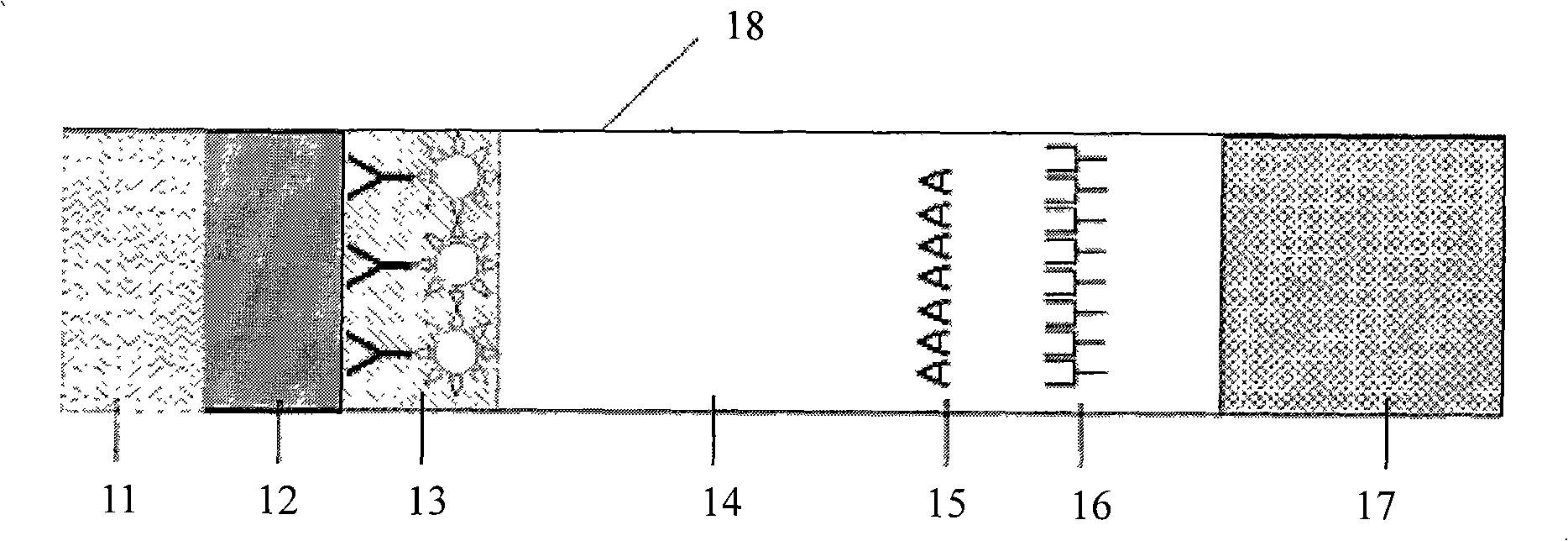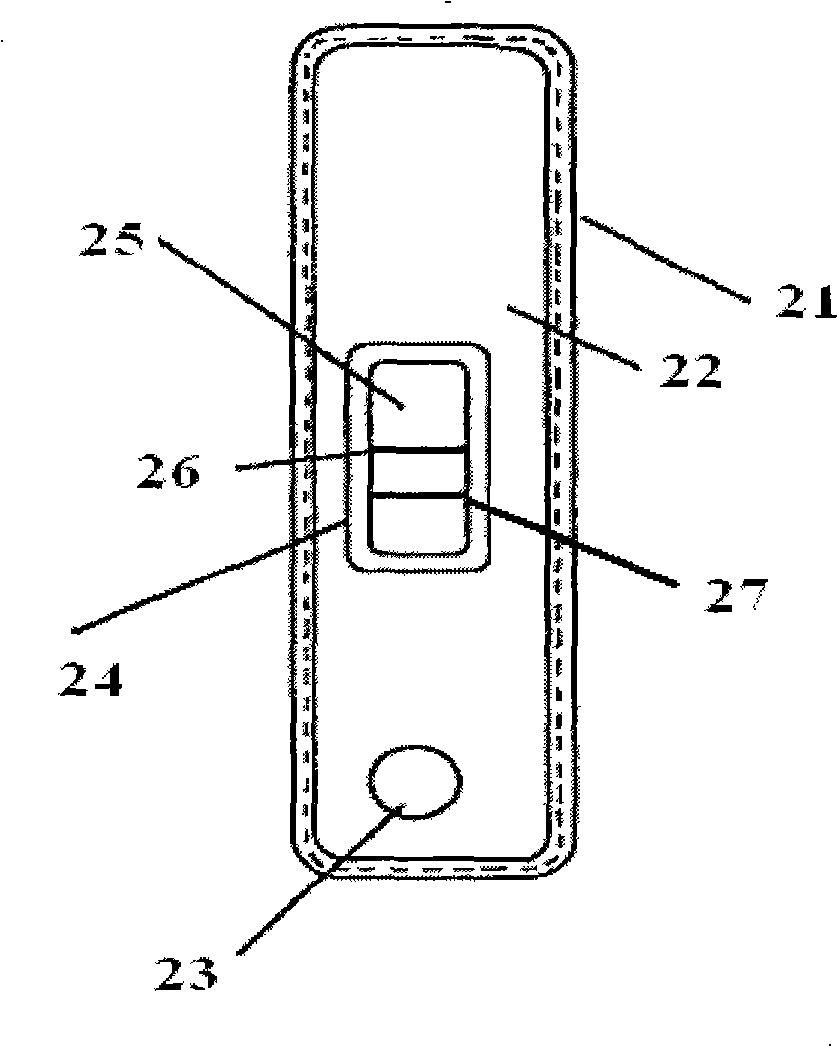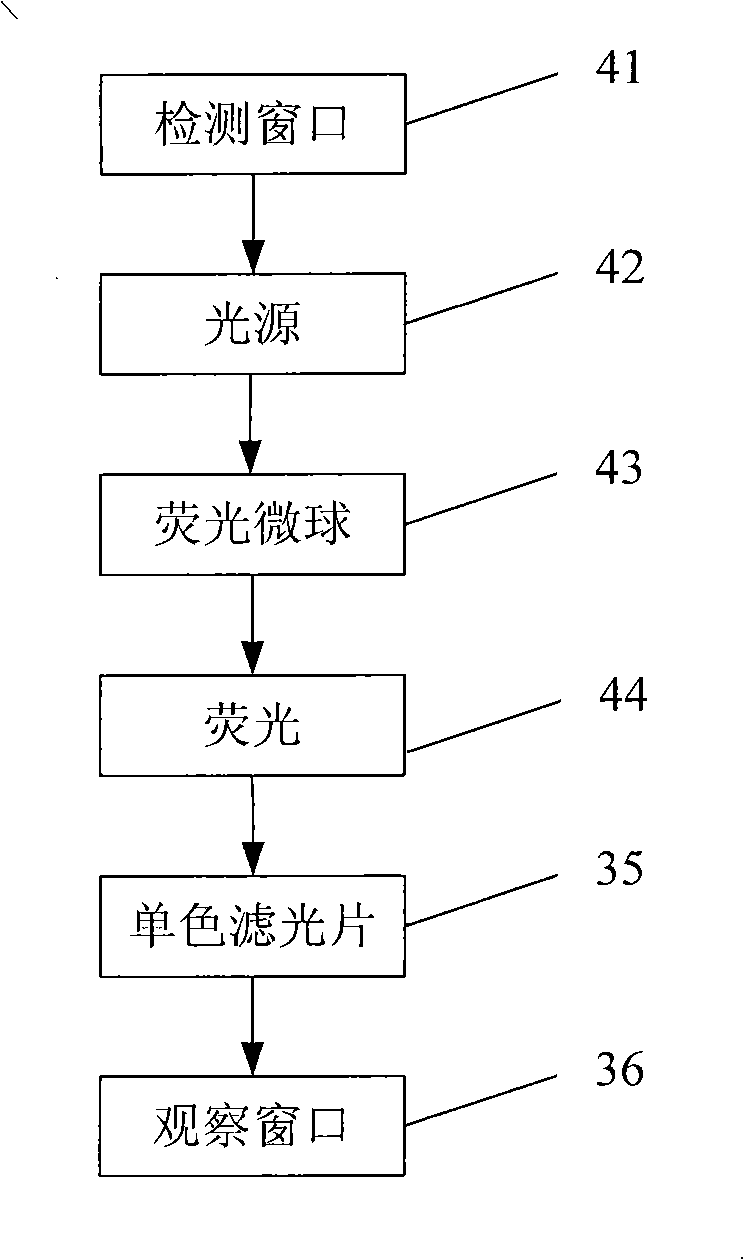Method for producing fluorescent microballoons immune chromatography test paper stripe and quantitative determination method
An immunochromatographic test paper and fluorescent microsphere technology, applied in the field of biomedical detection, can solve the problems of easy re-dropping of protein molecules, limited application scope, poor resistance to solution interference, etc., and achieves increased fluorescence stability and fluorescence lifetime. Scope and variety, overcoming the effect of easy leakage of dyes
- Summary
- Abstract
- Description
- Claims
- Application Information
AI Technical Summary
Problems solved by technology
Method used
Image
Examples
Embodiment 1
[0054] 1. Preparation of fluorescein isothiocyanate-silica-shell-core dual-structure fluorescent microspheres:
[0055] Mix 60ml of absolute ethanol, 2ml of ammonia water, 3ml of ethyl orthosilicate, 1ml of ultrapure water, and 1mg of fluorescein isothiocyanate, and react in a constant temperature water bath for 8 hours, then add Na 2 SiO 3 Closed microspheres, Na 2 SiO 3 The final concentration of the fluorescent microsphere is 3%, and the size of the fluorescent microsphere is controlled by adding hydrochloric acid to adjust the pH value of the solution, and the surface of the fluorescent microsphere is modified with an active group (-COOH).
[0056] 2. Preparation of fluorescent microspheres labeled with HBsAg monoclonal antibody S1 (EDC method):
[0057] Take 1mg of fluorescent microspheres coated with fluorescein isothiocyanate and centrifuge at 1000×g for 10-15min, collect the precipitate, and adjust the concentration of the microspheres to OD with 0.01M borate buffer...
Embodiment 2
[0076] 1. Preparation of dichlorotris(1,10-o-phenanthrene) ruthenium fluorescein-silica shell-core dual-structure fluorescent microspheres:
[0077] Mix 60ml of absolute ethanol, 4ml of ammonia water, 2ml of ethyl orthosilicate, 3ml of ultrapure water, and 3mg of dichlorotris(1,10-phenanthrene) ruthenium fluorescein, and react in a constant temperature water bath for 24 hours. Join Na2 SiO 3 Closed microspheres, Na 2 SiO 3 The final concentration of the fluorescent microsphere is 8%, and the size of the fluorescent microsphere is controlled by adding hydrochloric acid to adjust the pH value of the solution, and the active group (-NH 2 ) modification.
[0078] 2. Preparation of fluorescent microspheres labeled with alpha-fetoprotein monoclonal antibody:
[0079] Take 1mg of fluorescent microspheres of dichlorotris(1,10-phenanthrene)ruthenium fluorescein and centrifuge at 1000×g for 10-15min, collect the precipitate, and adjust the microspheres with 0.01M borate buffer solut...
PUM
| Property | Measurement | Unit |
|---|---|---|
| diameter | aaaaa | aaaaa |
Abstract
Description
Claims
Application Information
 Login to View More
Login to View More - R&D
- Intellectual Property
- Life Sciences
- Materials
- Tech Scout
- Unparalleled Data Quality
- Higher Quality Content
- 60% Fewer Hallucinations
Browse by: Latest US Patents, China's latest patents, Technical Efficacy Thesaurus, Application Domain, Technology Topic, Popular Technical Reports.
© 2025 PatSnap. All rights reserved.Legal|Privacy policy|Modern Slavery Act Transparency Statement|Sitemap|About US| Contact US: help@patsnap.com



